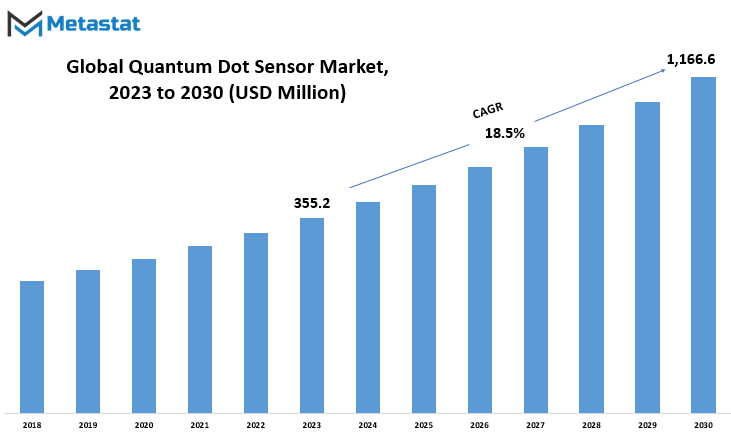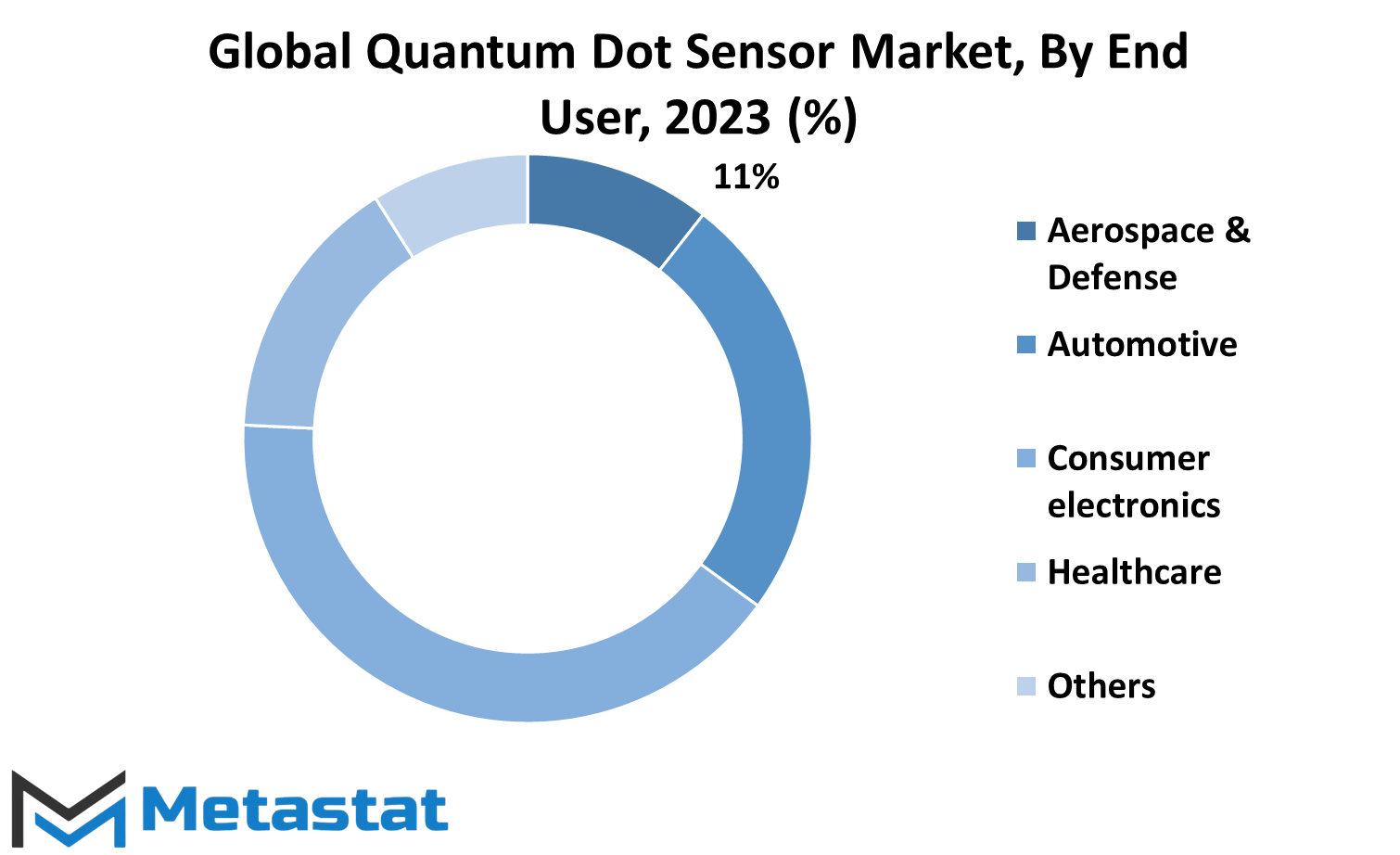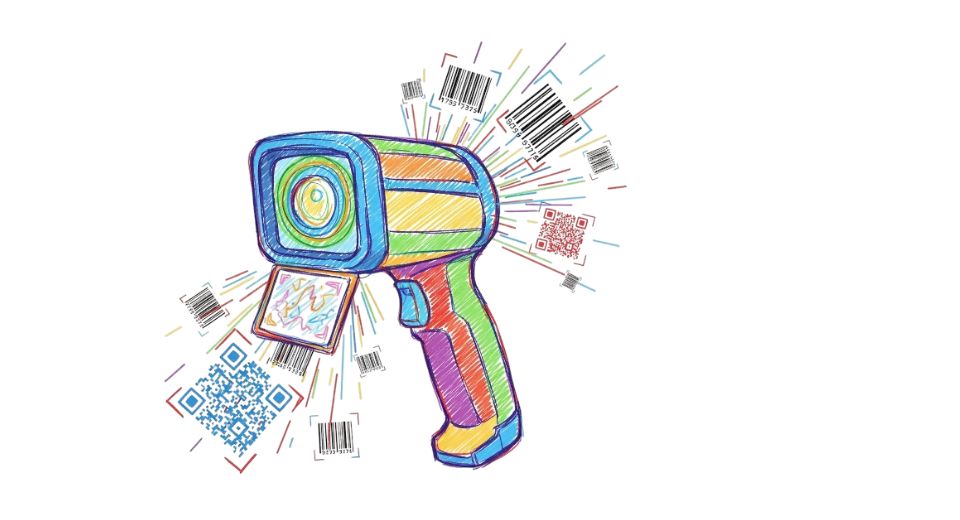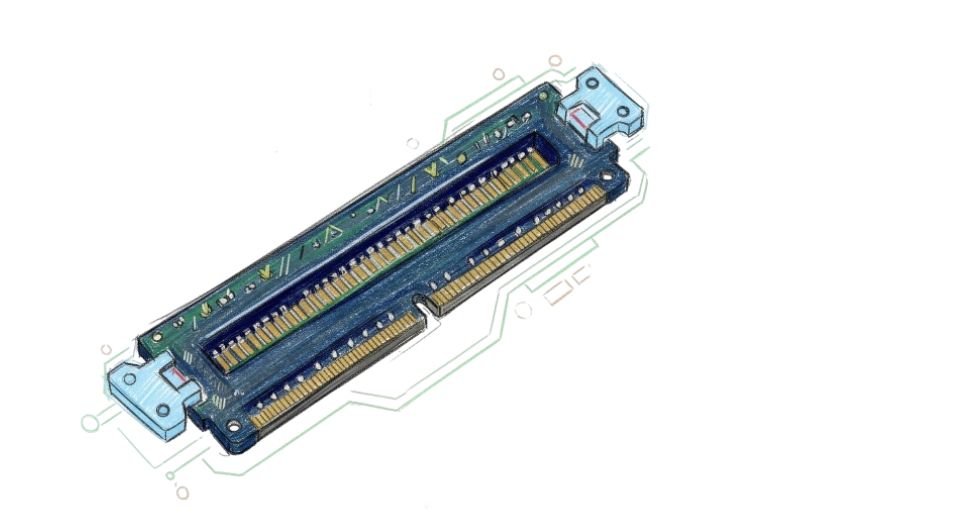MARKET OVERVIEW
The Quantum Dot Sensor Market stands at cutting-edge technological advancements, embodying where precision and innovation converge to redefine the landscape of sensing technology. These sensors represent a paradigm shift in the world of electronic sensing, leveraging the unique properties of quantum dots to revolutionize how we capture and interpret the world around us.
Quantum Dot Sensors are a breed apart, harnessing the principles of quantum mechanics to deliver unprecedented levels of sensitivity and accuracy in detecting various stimuli. Unlike conventional sensors, Quantum Dot Sensors exploit the quantum confinement effect, wherein semiconductor particles, often at the nanoscale, exhibit distinct and tunable optical properties. This inherent flexibility allows for the fine-tuning of sensor responses, enabling a spectrum of applications ranging from medical diagnostics to environmental monitoring.
The significance of Quantum Dot Sensors lies not only in their remarkable precision but also in their versatility. These sensors have transcended traditional boundaries, finding their way into diverse fields where sensitivity and selectivity are paramount. One of the pivotal applications is in the realm of medical diagnostics, where Quantum Dot Sensors demonstrate an unparalleled ability to detect and quantify biomolecules with exceptional accuracy. This has transformative implications for early disease detection and personalized medicine.
Moreover, the importance of Quantum Dot Sensors extends into environmental monitoring, playing a crucial role in assessing and mitigating the impact of human activities on the planet. Their high sensitivity allows for the detection of minute changes in environmental parameters, contributing to our understanding of climate change, pollution, and resource management.
As we delve into Quantum Dot Sensors, their significance becomes apparent in the intricate dance of photons and electrons at the quantum level, orchestrating a symphony of data that transcends the capabilities of traditional sensing technologies. These sensors are not just instruments; they are gateways to a new era of precision, where the subtleties of the quantum world are harnessed for practical, real-world applications.
Global Quantum Dot Sensor market is estimated to reach $1,166.6 Million by 2030; growing at a CAGR of 18.5% from 2023 to 2030.

GROWTH FACTORS
The global Quantum Dot Sensor market is propelled by several key driving factors that contribute to its growth trajectory. These factors, which act as catalysts for the market, are instrumental in shaping its current dynamics. However, like any market, there exist certain challenges that may potentially impede the growth of the Quantum Dot Sensor market.
The driving factors, often serving as the backbone of market expansion, encompass a range of elements. Technological advancements play a pivotal role, acting as a driving force that propels the market forward. The integration of cutting-edge technologies into Quantum Dot Sensors enhances their capabilities, making them more efficient and reliable.
Market demand also stands out as a significant driver, as the increasing need for sophisticated sensing technologies across various industries fuels the market's growth. The versatile applications of Quantum Dot Sensors, spanning from medical devices to consumer electronics, further contribute to their heightened demand in the global market.
However, amid these positive dynamics, challenges loom on the horizon. Regulatory hurdles and market competition emerge as potential obstacles that might hamper the market's growth. Regulatory requirements can pose complexities for market players, necessitating compliance with stringent standards and certifications. Additionally, the competitive landscape demands continuous innovation and differentiation to maintain a distinct market position.
The market's potential for growth remains robust, and overcoming regulatory challenges could unlock new avenues for expansion. The pursuit of innovative solutions and strategic partnerships within the industry can mitigate the impact of market competition, fostering resilience and sustainability.
Looking ahead, the Quantum Dot Sensor market is poised to capitalize on emerging opportunities that lie in wait. The increasing awareness and adoption of Quantum Dot Sensors in various industries, coupled with ongoing research and development, create fertile ground for market expansion in the coming years. As industries recognize the value and advantages offered by these sensors, the market is anticipated to witness significant growth, providing lucrative opportunities for stakeholders and participants.
MARKET SEGMENTATION
By Type
The global Quantum Dot Sensor market with various segments that play a crucial role in shaping its overall structure. One such segmentation is based on types, aiming to categorize the diverse sensors available in the market. By understanding these types, stakeholders can gain insights into the market's intricacies and potential growth areas.
One significant type within this market is the Resistance Strain Type. In 2022, the Resistance Strain Type segment exhibited a market value of 134.5 USD Million. This indicates the economic significance and consumer demand for sensors falling under this category. The Resistance Strain Type sensors operate based on the principle of resistance changes under strain, providing a reliable mechanism for detecting and measuring various parameters.
Another noteworthy type is the Piezoelectric Type, which commanded a market value of 170.9 USD Million in 2022. The prominence of this segment suggests a widespread use and preference for sensors employing piezoelectric materials. Piezoelectric sensors operate by generating electric charges in response to mechanical stress, making them suitable for diverse applications across industries.
Understanding these distinctions in sensor types is essential for both manufacturers and consumers. It allows manufacturers to tailor their products to meet specific market demands, while consumers can make informed decisions based on the functionality and features associated with each sensor type. Moreover, this segmentation sheds light on the diversity within the Quantum Dot Sensor market, indicating the versatility and adaptability of these technological solutions.
The global Quantum Dot Sensor market, segmented by types such as Resistance Strain and Piezoelectric, reflects the diverse preferences and applications within the sensor industry. The market values associated with each type underscore their respective significance, guiding stakeholders in navigating this dynamic and evolving market landscape. As technology continues to advance, these insights into sensor types become increasingly valuable, contributing to the overall growth and innovation in the Quantum Dot Sensor market.
By Application
The Quantum Dot Sensor market is categorized based on its applications. In 2022, the Smartphones & Laptops segment held a value of 117.1 USD Million. This segment indicates the integration of Quantum Dot Sensors in mobile devices and personal computers, reflecting a significant market share.
Additionally, the Digital Cameras segment was valued at 63.4 USD Million in 2022. This figure underscores the presence and adoption of Quantum Dot Sensors in the realm of digital photography. The Surveillance Cameras segment, valued at 56 USD Million in 2022, signifies the incorporation of these sensors in security and surveillance systems.
Moreover, the Medical Imaging Devices segment accounted for a value of 57.6 USD Million in 2022, indicating the application of Quantum Dot Sensors in the medical field for advanced imaging purposes. Lastly, the Others segment, with a value of 11.2 USD Million in 2022, represents various applications beyond the specified categories.
This segmentation provides insights into the diverse applications of Quantum Dot Sensors, showcasing their versatility across different sectors. The market's valuation in each application segment highlights the varying degrees of adoption and significance in distinct technological landscapes.
By End-user
The global Quantum Dot Sensor market stands as a testament to the remarkable advancements in sensor technology. This market, categorized by end-users, provides a fascinating insight into its diverse applications.
The Aerospace & Defense sector, a crucial component of this market, recorded a valuation of 32.2 USD Million in 2022. This segment plays a pivotal role in leveraging quantum dot sensors for various applications within the aerospace and defense industries.
Moving on, the Automotive sector, valued at 74.4 USD Million in the same year, is another significant player in the Quantum Dot Sensor market. The integration of quantum dot sensors in automotive technologies has notably enhanced functionalities, contributing to the sector's growth.
The Consumer Electronics segment, valued at 124.3 USD Million in 2022, reflects the widespread adoption of quantum dot sensors in electronic devices. This includes everything from smartphones to televisions, where these sensors enhance display quality and overall performance.
In the Healthcare segment, which boasted a valuation of 46.6 USD Million in 2022, quantum dot sensors have found applications in medical devices and diagnostics. The precision and sensitivity offered by these sensors contribute to advancements in healthcare technology. The Others segment, valued at 27.8 USD Million in 2022, encompasses various industries and applications beyond the specified categories. This diverse segment underscores the versatility of quantum dot sensors in catering to a wide array of end-user needs.
The global Quantum Dot Sensor market, segmented by end-users, demonstrates the widespread integration of this technology across diverse industries. From the aerospace and defense sector to consumer electronics, automotive, healthcare, and beyond, quantum dot sensors continue to play a pivotal role in shaping the landscape of modern technological applications. The market's valuation in 2022 reflects not only its current significance but also hints at the potential for further growth and innovation in the coming years.

REGIONAL ANALYSIS
The global Quantum Dot Sensor market operates in a framework of geographical divisions, with a focus on North America and Europe, among others. These regions serve as significant players in the market's dynamics, each bringing its own influence and impact to the Quantum Dot Sensor landscape.
North America, as a key participant in the Quantum Dot Sensor market, shows a robust presence. The region's technological prowess and innovation-driven ecosystem contribute to the market's growth. Quantum Dot Sensors find applications across various industries in North America, underlining their relevance in the region's technological landscape.
Similarly, Europe stands as a pivotal hub in the global Quantum Dot Sensor market. The region's emphasis on research and development, coupled with a strong industrial base, propels the market forward. Quantum Dot Sensors witness adoption in diverse sectors in Europe, reflecting the versatility and adaptability of this technology in different applications.
As we navigate through the global Quantum Dot Sensor market, it becomes apparent that geographical distribution plays a crucial role in shaping the market dynamics. North America and Europe, with their technological advancements and widespread industrial applications, contribute significantly to the growth and evolution of Quantum Dot Sensors on the global stage.
COMPETITIVE PLAYER
In the expansive landscape of the global Quantum Dot Sensor market, key players drive innovation and market dynamics. SWIR Vision Systems and Emberio stand out as prominent entities within the Quantum Dot Sensor industry. These players, with their technological prowess and market influence, contribute significantly to the ongoing advancements in sensing technologies.
SWIR Vision Systems, as a key participant, brings its expertise to the forefront of the Quantum Dot Sensor market. Their role involves leveraging Short-Wave Infrared (SWIR) technology, offering enhanced capabilities in imaging and sensing applications. The company's contributions extend across various sectors, showcasing the versatility of Quantum Dot Sensors in addressing diverse industry needs.
Emberio, another notable player, adds its distinct mark to the Quantum Dot Sensor landscape. Operating within the industry, Emberio focuses on delivering cutting-edge solutions that harness the unique properties of quantum dots. Their presence underscores the relevance of Quantum Dot Sensors in applications where precision and efficiency are paramount.
These key players, SWIR Vision Systems and Emberio, exemplify the vibrancy and competitive spirit within the Quantum Dot Sensor market. Their innovations not only push technological boundaries but also contribute to the broader narrative of how Quantum Dot Sensors are reshaping sensing capabilities across industries. As these players continue to navigate the dynamic landscape of sensing technologies, the global Quantum Dot Sensor market remains at the forefront of advancements, poised for further growth and breakthroughs.
Quantum Dot Sensor Market Key Segments:
By Type
- Resistance strain type
- Piezoelectric type
By Application
- Smartphones & Laptops
- Digital Cameras
- Surveillance Cameras
- Medical Imaging Devices
- Others
By End-user
- Aerospace & Defense
- Automotive
- Consumer electronics
- Healthcare
- Others
Key Global Quantum Dot Sensor Industry Players
- SWIR Vision Systems
- Emberion
- imec
- SeeDevice
- Hamamatsu Photonics K.K.
- IQE PLC
WHAT REPORT PROVIDES
- Full in-depth analysis of the parent Industry
- Important changes in market and its dynamics
- Segmentation details of the market
- Former, on-going, and projected market analysis in terms of volume and value
- Assessment of niche industry developments
- Market share analysis
- Key strategies of major players
- Emerging segments and regional growth potential








 US: +1 3023308252
US: +1 3023308252






